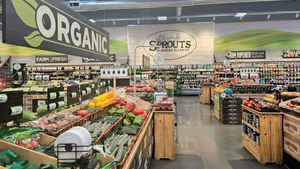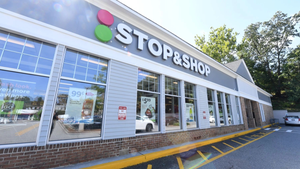Why it doesn’t take much when it comes to seafood messagingWhy it doesn’t take much when it comes to seafood messaging
Department operators can spur purchasing by limiting contact with shoppers
January 8, 2025

Communication is key for effective fresh seafood merchandising. But how much is too much?
Retailers can strengthen shopper interest by highlighting key product attributes, such as health benefits and how the seafood was caught with minimal environmental impact.
But merchandisers also must demonstrate restraint and not bombard shoppers with messages willy-nilly if they are to avoid confusion and category abandonment, analysts said.
Seafood department personnel that engage shoppers and provide accurate product data will typically be the most effective in generating sales, particularly if retailers are concurrently presenting the same information through other merchandising channels, said Jason Resner, president of DNR Sales & Marketing Strategy Advisors, a Naperville, Ill.-based food industry consulting firm.
Resner is the former vice president of fresh merchandising and procurement for Downers Grove, Ill.-based Fresh Thyme Market, and former vice president of meat, seafood, packaged deli merchandising, and procurement for the Schenectady, N.Y-based Price Chopper and Market 32 grocery chains.
During a “360 marketing campaign,” operators can describe product quality, seafood’s wellness advantages, and the retailer’s commitment to only collaborate with suppliers that follow ethical sourcing practices, he said.
“Most customers are unaware of the many health benefits that come from the multitude of seafood options, and many still worry about the possibility of mercury in products,” Resner said. “They often are just familiar with the wellness attributes of salmon, without understanding the health advantages from eating shrimp or other types of fish fillets.”
Back to school
Onsite education is one of the most effectual ways to enhance product expertise while ensuring consistent messaging by all parties, he said.
“The concept of ‘train the trainer’ would be the nucleus of an instructional session and includes installing the knowledge, direction, messaging, and oftentimes additional selling incentives to the department and store leaders,” Resner said. “They then take the information and energy to ensure the remaining full- and part-time teammates all understand the strategy and initiative to support seafood sales and create customers for life.”
Retailers also will strengthen merchandising by using online vehicles to market seafood to shoppers in lieu of in-store signage, he said. While signs and displays are practical for spotlighting price, shoppers often ignore signage that contains additional product information, especially if the messages are too “wordy,” Resner said.
“Most customers do not enjoy spending more time in grocery stores than necessary,” he said. “The digital and social campaigns can generate many more customer impressions than in-store displays.”
It is vital, however, that merchandisers keep communications to a minimum and that the messaging remains uniform for the greatest impact, Resner said
In addition, operators can enhance customer allegiance and appreciation by providing gift cards and money-saving coupons during digital marketing campaigns, he said, noting that the items might serve as rewards to shoppers who provide feedback about their favorite seafood items.
Consistency is key
“Retailers need to create an effective messaging strategy and to stick to it,” Resner said, adding that merchandisers must be patient in their quest for subsequent sales gains. “Rome wasn’t built in a day, and neither will there be a fast increase in customers’ seafood purchasing patterns,” he said.
All stores in a retail chain should also present the same messages regardless of the unique shopper demographics in each location, Resner said. “Attempting to be all things to all people usually will not be successful and will typically confuse customers rather than make them more aware of product benefits,” he said. “Messages can become convoluted.”
While merchandisers should typically provide the same amount of data for each seafood selection as well, they can offer additional details on items that they are seeking to move quickly, particularly if the selections are part of promotions, Resner said.
“Those products should have one or two additional bullet points,” he said, such as spotlighting a vitamin or mineral that is specific to the species, the speed in which the selection came to a store after it was caught, and any unique elements.
Merchandisers without the resources to maintain an elaborate seafood marketing initiative can instead create “plug and play” digital messaging for use on a less frequent basis, Resner said.
A plug-and-play program typically consists of three to five messages that communicate brand information, he said. Operators then “plug” one of the messages into their weekly marketing every two weeks and continue to rotate each message into the marketing every two to three weeks afterward.
“This is a fiscally responsible and efficient way to only invest the creative labor and time once during the fiscal planning process,” Resner said. “It creates a ready and waiting digital library for use throughout the year and ensures a consistent message.”
About the Author
You May Also Like


.webp?width=300&auto=webp&quality=80&disable=upscale)



